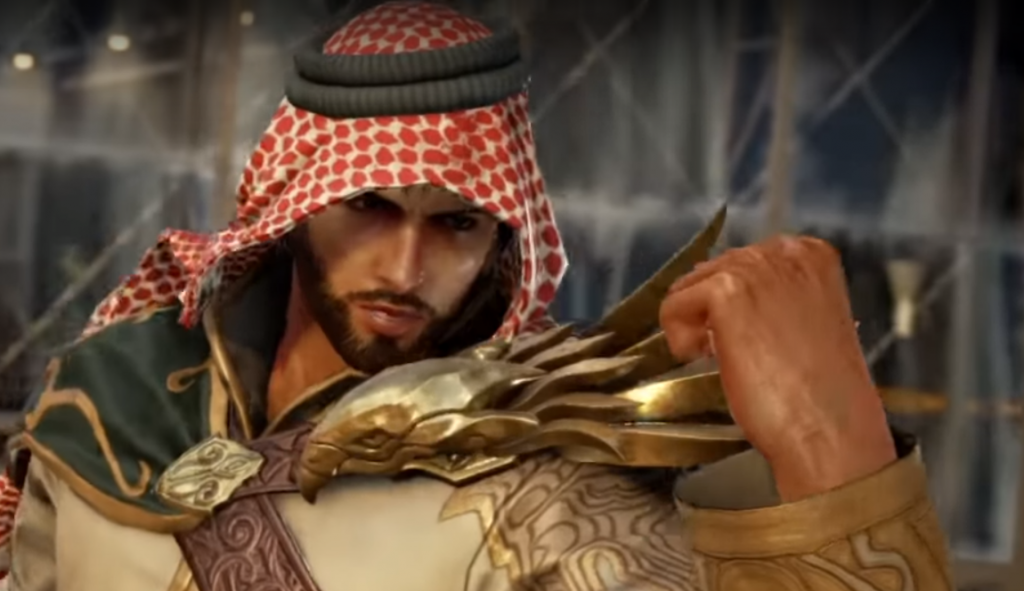
- ARAB NEWS
- 15 Jul 2025

Hala Tashkandi
Arabs have traditionally been underrepresented or misrepresented in the video game industry.
Arab characters in video games are most often terrorists or bad guys generally, said Dr. Romana Ramzan, a game design lecturer at Glasgow Caledonian University.
“In games, we’ll be represented as the ‘other’ people who are the ones you have to kill,” he added. “Usually it’s a slightly dark-skinned character shouting ‘Allahu Akbar’ (God is Great), carrying an AK-47. Or he has a camel or a goat.”
Rami Ismail, cofounder of gaming studio Vlambeer, said: “That’s ‘Call of Duty’ over and over. Shoot all the Arabs.”
But in the past decade or so, some video games that have risen to prominence do not feature Arabs as villains, a notable example being Altair ibn La’Ahad from Ubisoft’s 2007 open-world game “Assassin’s Creed.”
Taking place in the Levant in the 12th century during the Crusades, Ibn La’Ahad laid the foundation for what would become one of the biggest video game series of all time.
Ubisoft went on to produce more than a dozen games in the franchise, the latest of which revisited the Arab world with the introduction of Layla Hassan, an Egyptian-American who is one of the game’s playable characters.
In other game franchises, Arab characters have slowly begun appearing in different capacities.
“Overwatch,” a 2016 multiplayer first-person shooter from Blizzard, features the playable characters Ana and Pharah, a mother-and-daughter duo from Egypt, the former of whom has several Arabic voice lines.
In Japanese video games, significant efforts have been made to have Arab playable characters who are not villains.
Saudi animation company Manga Productions held a design competition in collaboration with Japanese-Chinese video game company SNK in September 2017.
Fans in the Middle East were invited to submit designs for a new character and stage for downloadable content for “King of Fighters XIV.”
The winning character was a female fighter named Najd, designed by Saudi artist Mashael Al-Barrak.
The winning stage was a version of the Saudi capital Riyadh by Omani artist Zainab Al-Lawaty. Najd dresses in a unique abaya, covers her hair with a hijab, and manipulates shadows as her power.
Al-Barrak said: “I decided to create a contemporary Saudi woman who’d reflect the changes happening in Saudi Arabia while still retaining traditional and Islamic values.”
Essam Bukhary, CEO of Manga Productions, said: “I’m extremely thrilled that we were able to collaborate with SNK to create both a character and stage designed by the talented youths in Saudi Arabia.”
He added: “We hope this will create more opportunities for young video game developers in Middle Eastern countries such as Saudi Arabia. We hope fans in Japan and around the globe enjoy these new creations.”
Katsuhiro Harada, the creator of “Tekken,” spoke of the diversity in the franchise’s newer games. “Twenty years ago, we designed the game with a purely Japanese audience in mind. But over the course of that time we received a lot of feedback, especially as the games began to grow in popularity, and started to expand even more to include more cultural identities such as Arabic,” he said.
“A lot of the appeal in Japan came from the fact that about 50 percent of the game’s design had a foreign influence. We borrowed a lot from foreign cultures – Chinese, American and so on.”
Harada expressed happiness at how positively the first Saudi character in “Tekken” was received.
“Shaheen was actually one of the most difficult characters for us in terms of design. We had to rework his costume many times before we were satisfied with the end result,” he said.
“We also took a lot of fan feedback on Shaheen’s design, as it was important for us for the fans to be satisfied before we could formally release the character.”
Rashid from 2016’s “Street Fighter V” is another example of an Arab character in a Japanese video game.
The eldest son in a wealthy family, his character is heavily inspired by the UAE, as his official character art depicts him in the emirate of Dubai.
Yet despite all this, Arab characters in Japanese video games are largely featured in the fighting genre, where there is not a lot of room to explore the richness of their culture.
Nawaf Almussaed, a Saudi gamer, streamer and podcaster, said he would welcome Japanese attempts to create more detailed Arab characters, especially since the Japanese do not carry the same bias that the West does.
“In ‘Pokemon’ games, for example, there are different regions inspired by other real-life places like Hawaii (Alola), France (Kalos) and the Arizona desert (Orre),” he said.
“I’d love to see a region inspired by a country in the Middle East, with its own special Pokemon. There’s so much potential in something like that.